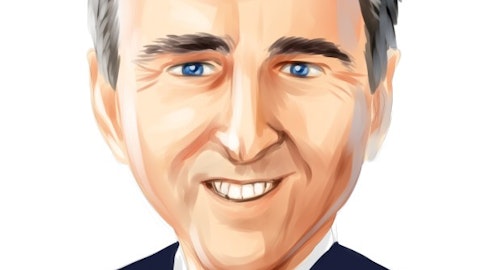Back in April 2012, Ted White and Christopher Kiper decided it was time to launch their own activist hedge fund, and they called it Legion Partners Asset Management. The Beverly Hills-based fund got the seed money from California State Teachers’ Retirement System, which has invested in the fund more than $250 million since its inception. Legion Partners finds this stable capital support to be one of the most important benefits that help it stick to its long term orientation. Prior to launching Legion Partners, Ted White sharpened his investment skills at Knight Vinke Asset Management (a Europe-based activist manager), where he was Chief Operating Officer and Managing Director, and at California Public Employees’ Retirement System where he was a Director of Corporate Governance and a Portfolio Manager in charge of everything related to its Governance Program. Ted White, a Chartered Financial Analyst and a former Deputy Director of the Council of Institutional Investors also worked at Deputy State Treasurer at the California State Treasurer’s Office, where, as an Investment Officer, he was in charge of trading and fixed income portfolio analysis. He earned his MBA with a concentration in finance from California State University.
Before co-founding Legion Partners, Christopher Kiper was a Portfolio Manager of the Shamrock Activist Value Fund, and prior to joining Shamrock Capital Advisors, he launched and ran Ridgestone Small Cap Value Fund, which was an activist fund in partnership with Ridgestone Corporation, whose main focus was on small-cap stocks. After graduating magna cum laude with a B.S. in Business Administration in Accounting Program from the University of Nebraska, he cut his teeth at Ernst & Young as an auditor, mainly concentrating on the financial service industry.

According to the words of its founders, Legion Partners was launched with the idea of forming the leading small-cap activist fund that would answer long term needs of investors. Among the fund’s investors are high net worth individuals, pension funds, institutional clients, and foundations. The fund’s investment philosophy relies on thorough research, keeps a concentrated portfolio, holding its positions for a long time in order to attain excellent risk-adjusted returns. The essential parts of its investment process are: choosing the right stocks and professional activism. Speaking of its activism, Legion Partners doesn’t like to make a lot of noise, instead, it prefers to collaborate with the management teams of the companies it invests in. The fund usually tries to obtain a seat among the board of directors or to provide strategic guidance that would help the company attain better long-term performance.
Legion Partners Composite Index delivered 34.08% in 2013, followed by a flat (0.0%) return in 2014, and it went down by 4.34% in 2015. Then in 2016, it delivered a strong 12.44%, and even higher return of 29.52% in 2017. Last year through October Legion Partners Composite Index brought back 23.37%. Its total return amounted to 273.15%, for a compound annual return of 20.17%, while its worst drawdown stood at 20.46.
Insider Monkey’s flagship strategy identifies the best performing 100 hedge funds at the end of each quarter and invests in their consensus stock picks. This way it is always invested in the best ideas of the best performing hedge funds and is able to generate much higher returns than the market. Since its inception in May 2014, our flagship strategy generated a cumulative return of 89%, beating the S&P 500 ETF (SPY) by 29 percentage points (see the details here).
At the end of the fourth quarter of 2018, Legion Partners’ equity portfolio was valued $327.15 million, down by 30.62% from one quarter earlier. In the portfolio, there were 13 long positions after the fund had added one and dumped one. It didn’t hold a single stock of those 30 Most Popular Stocks Among Hedge Funds in Q4 of 2018. More about the fund’s largest fourth quarter positions you can find on the next page.





